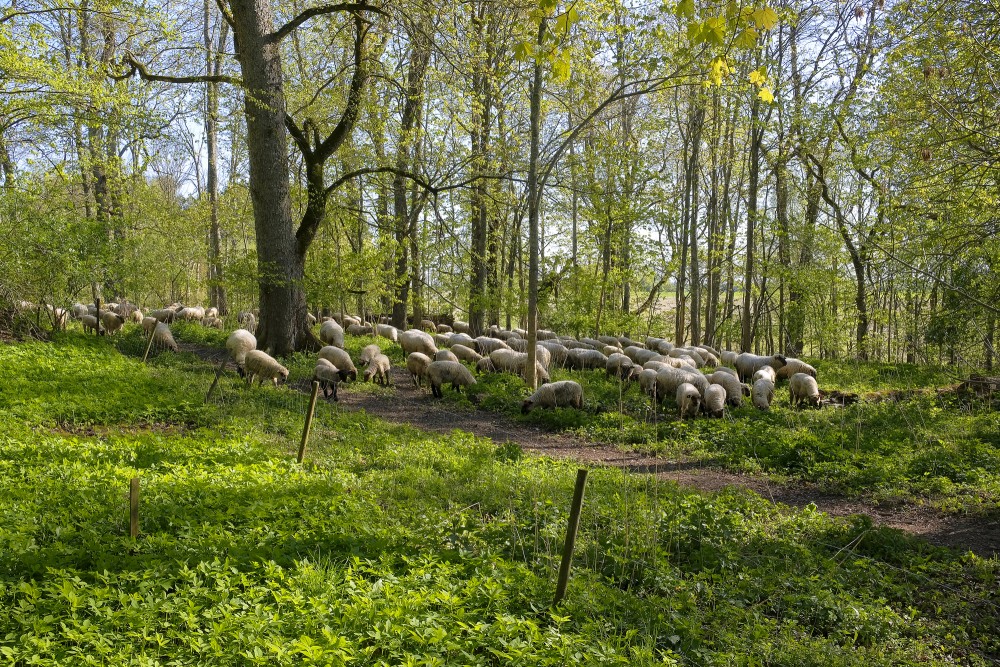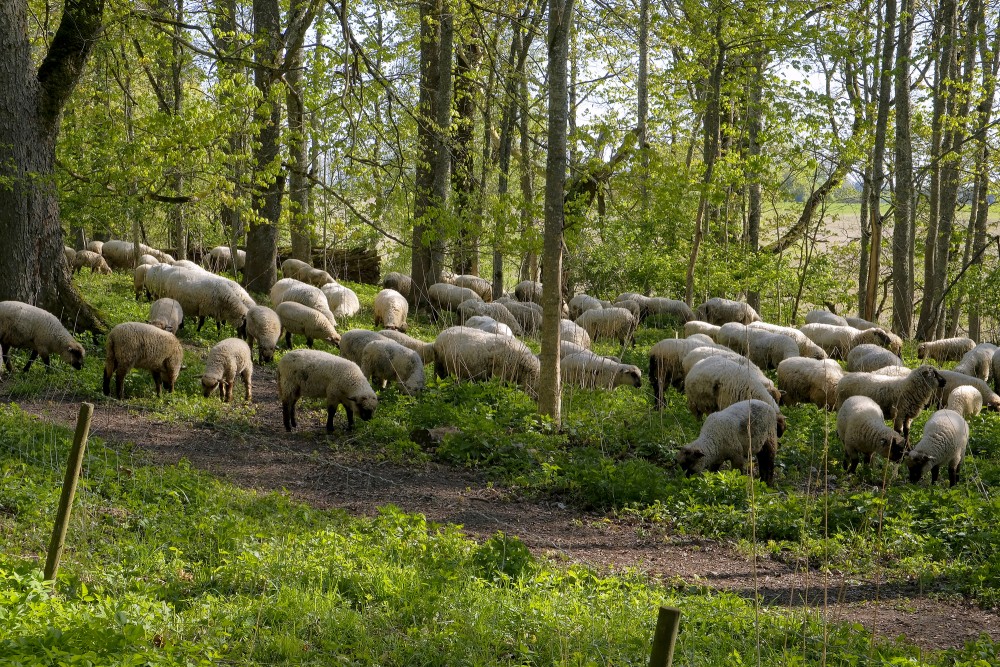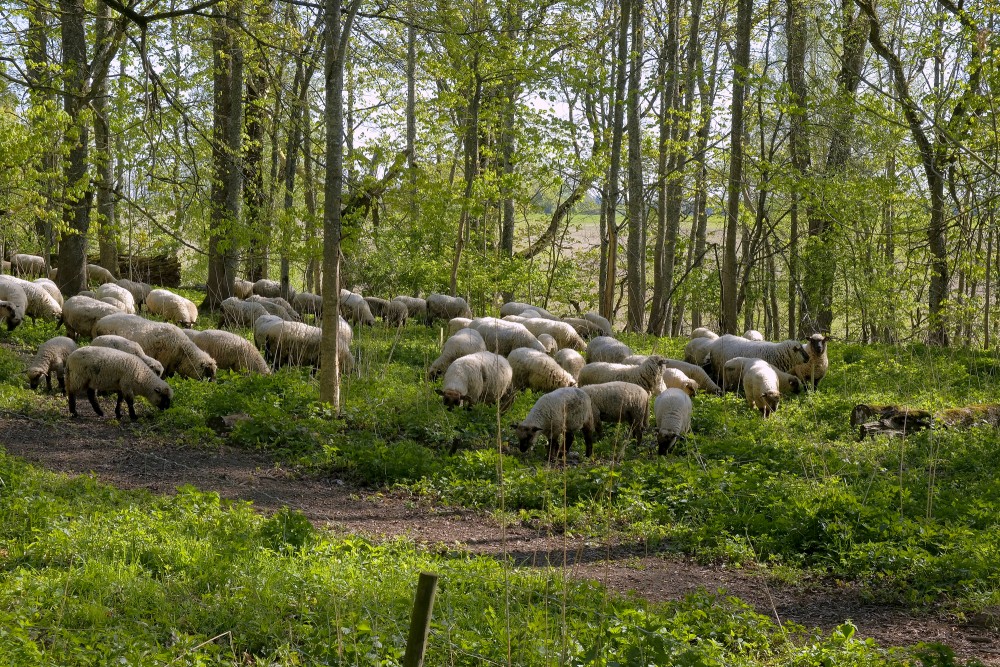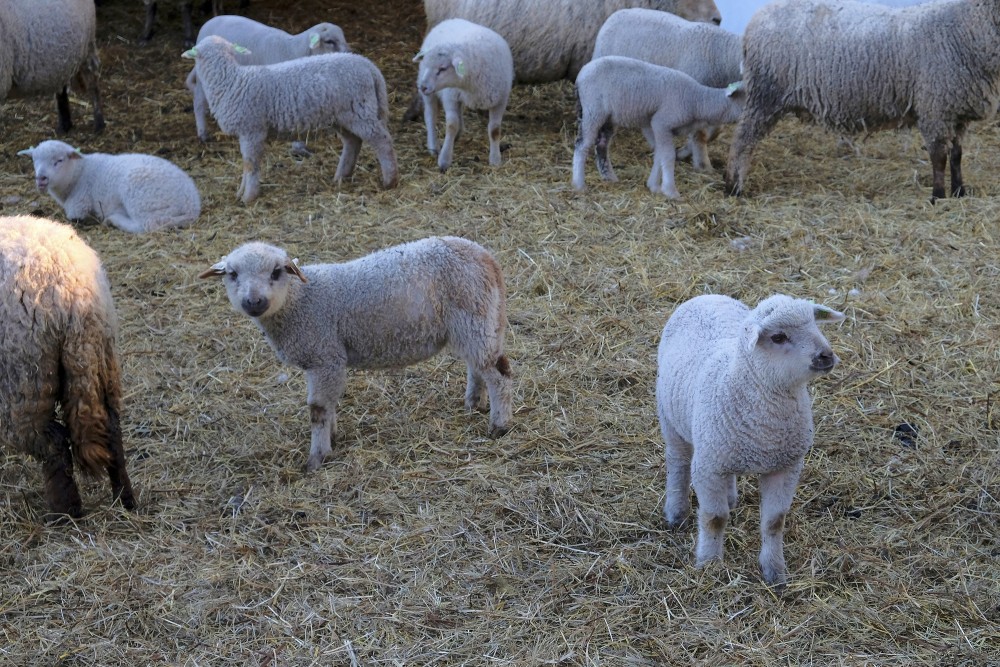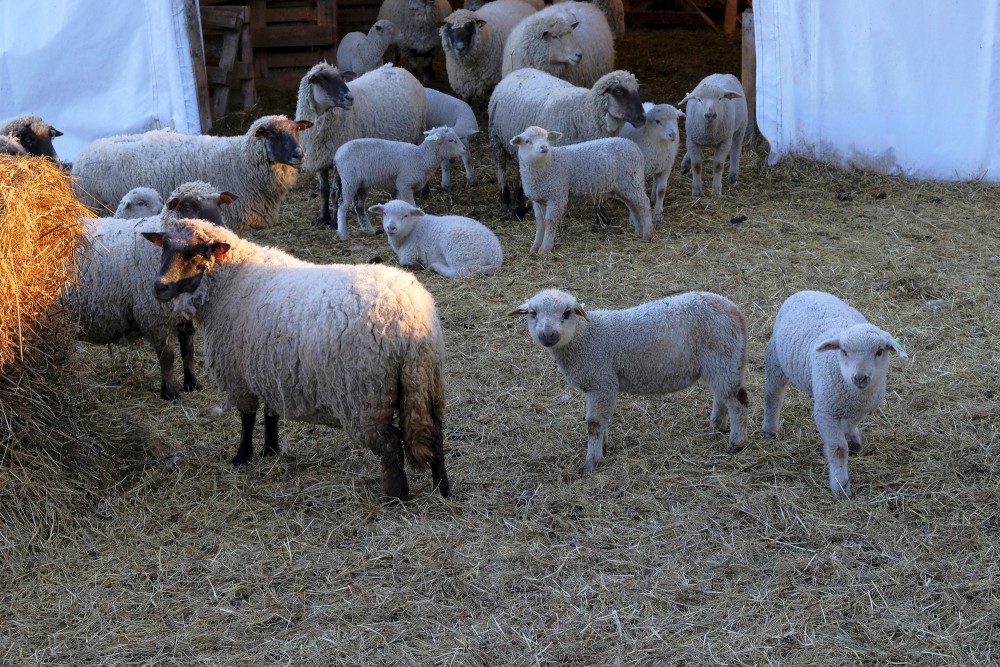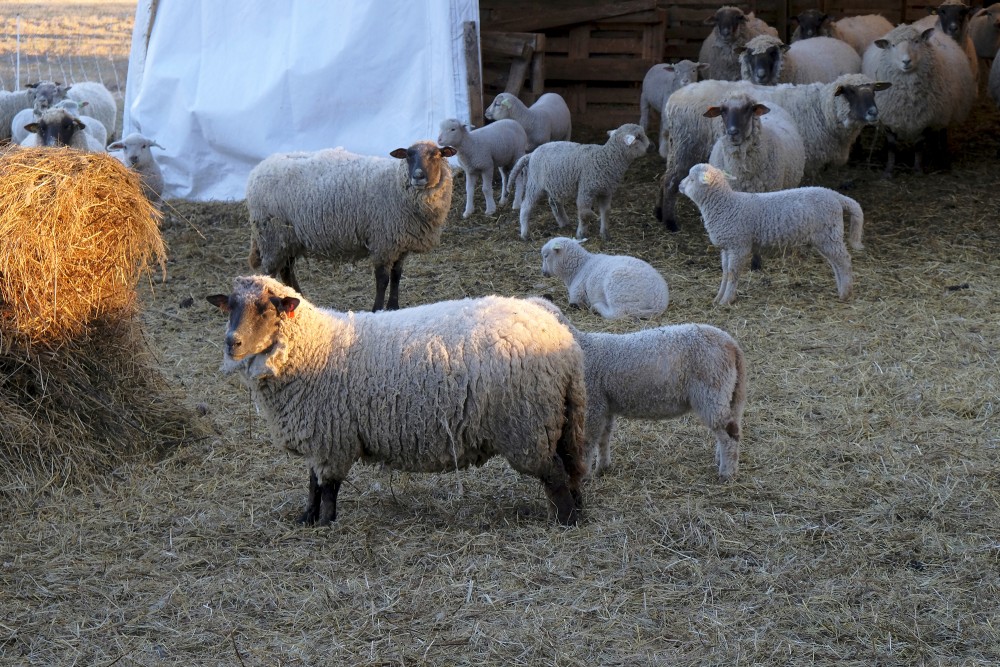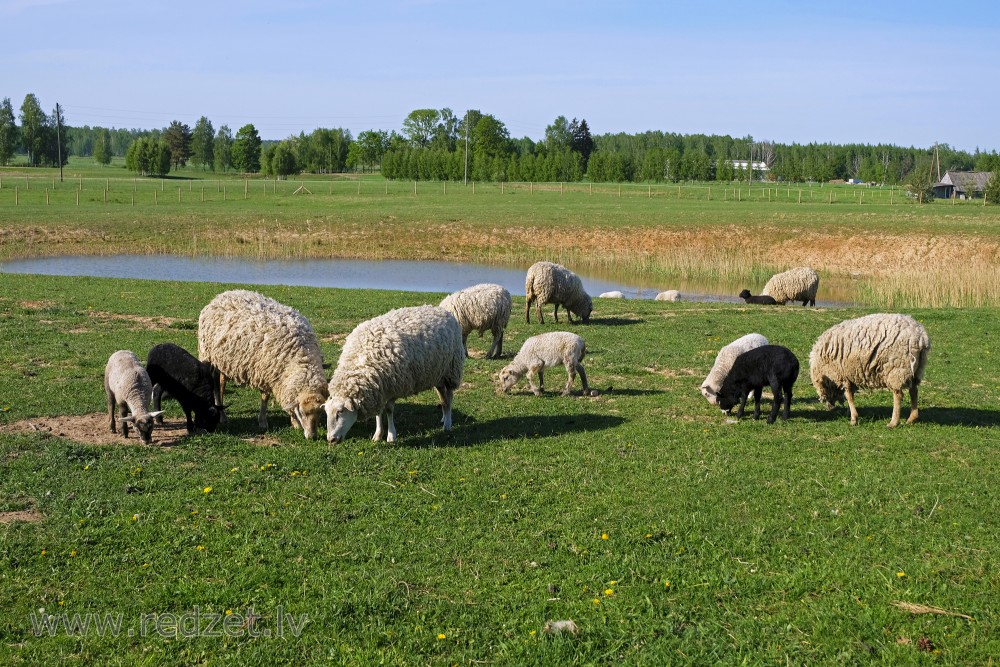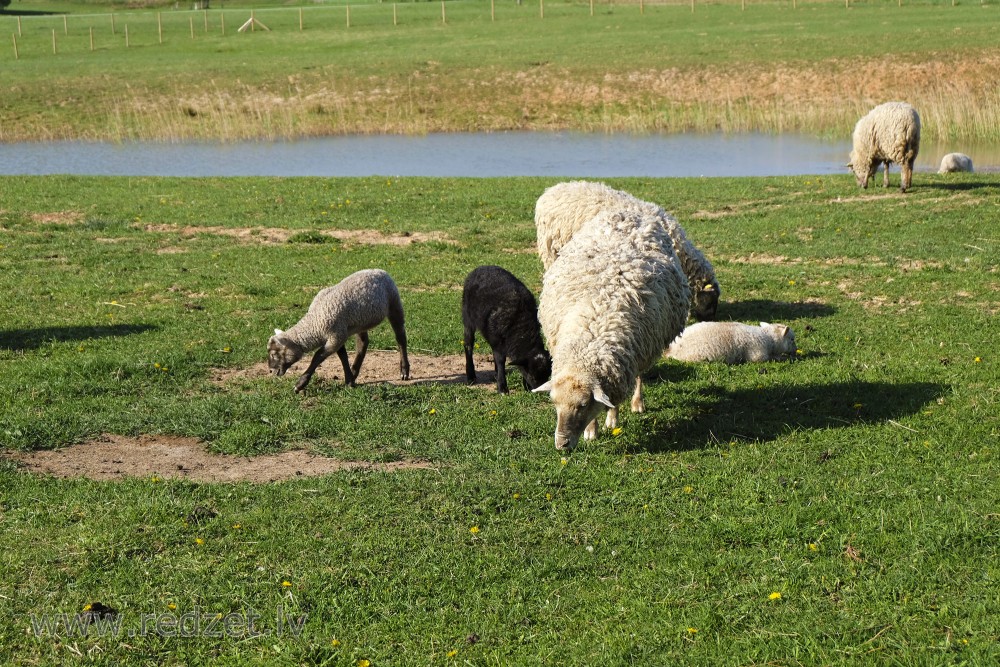Livestock
Livestock is commonly defined as domesticated animals raised in an agricultural setting to produce labor and commodities such as meat, eggs, milk, fur, leather, and wool. The term is sometimes used to refer solely to those that are bred for consumption, while other times it refers only to farmed ruminants, such as cattle and goats. Horses are considered livestock in the United States.The USDA classifies pork, veal, beef, and lamb as livestock and all livestock as red meat. Poultry and fish are not included in the category.
The breeding, maintenance, and slaughter of livestock, known as animal husbandry, is a component of modern agriculture that has been practiced in many cultures since humanity's transition to farming from hunter-gatherer lifestyles. Animal husbandry practices have varied widely across cultures and time periods, and continues to play a major economic and cultural role in numerous communities.
Livestock farming practices have largely shifted to intensive animal farming, sometimes referred to as "factory farming"; over 99% of livestock in the US are now raised in this way. Intensive animal farming increases the yield of the various commercial outputs, but has also led to negative impacts on animal welfare, the environment, and public health.Due to these negative impacts, but also for reasons of farming efficiency (see Food vs. feed), one projection mentions a large decline of livestock at least some animals (i.e. cattle) in certain countries by 2030.
Etymology
Livestock as a word was first used between 1650 and 1660, as a compound word combining the words "live" and "stock".In some periods, "cattle" and "livestock" have been used interchangeably. Today, the modern meaning of cattle is domesticated bovines, while livestock has a wider sense.
United States federal legislation defines the term to make specified agricultural commodities eligible or ineligible for a program or activity. For example, the Livestock Mandatory Reporting Act of 1999 (P.L. 106-78, Title IX) defines livestock only as cattle, swine, and sheep, while the 1988 disaster assistance legislation defined the term as "cattle, sheep, goats, swine, poultry (including egg-producing poultry), equine animals used for food or in the production of food, fish used for food, and other animals designated by the Secretary."
Deadstock is defined in contradistinction to livestock as "animals that have died before slaughter, sometimes from illness or disease". It is illegal in many countries, such as Canada, to sell or process meat from dead animals for human consumption.[11]
History
Animal-rearing originated during the cultural transition to settled farming communities from hunter-gatherer lifestyles. Animals are domesticated when their breeding and living conditions are controlled by humans. Over time, the collective behaviour, lifecycle and physiology of livestock have changed radically. Many modern farm animals are unsuited to life in the wild.
The dog was domesticated early; dogs appear in Europe and the Far East from about 15,000 years ago Goats and sheep were domesticated in multiple events sometime between 11,000 and 5,000 years ago in Southwest Asia. Pigs were domesticated by 8,500 BC in the Near East and 6,000 BC in China. Domestication of the horse dates to around 4000 BC. Cattle have been domesticated since approximately 10,500 years ago.Chickens and other poultry may have been domesticated around 7000 BC.
Farming practices
Traditionally, animal husbandry was part of the subsistence farmer's way of life, producing not only the food needed by the family but also the fuel, fertiliser, clothing, transport and draught power. Killing the animal for food was a secondary consideration, and wherever possible its products, such as wool, eggs, milk and blood (by the Maasai) were harvested while the animal was still alive.In the traditional system of transhumance, people and livestock moved seasonally between fixed summer and winter pastures; in montane regions the summer pasture was up in the mountains, the winter pasture in the valleys.
Animals can be kept extensively or intensively. Extensive systems involve animals roaming at will, or under the supervision of a herdsman, often for their protection from predators. Ranching in the Western United States involves large herds of cattle grazing widely over public and private lands. Similar cattle stations are found in South America, Australia and other places with large areas of land and low rainfall. Ranching systems have been used for sheep, deer, ostrich, emu, llama and alpaca. In the uplands of the United Kingdom, sheep are turned out on the fells in spring and graze the abundant mountain grasses untended, being brought to lower altitudes late in the year, with supplementary feeding being provided in winter.
In rural locations, pigs and poultry can obtain much of their nutrition from scavenging, and in African communities, hens may live for months without being fed, and still produce one or two eggs a week.At the other extreme, in the more developed parts of the world, animals are often intensively managed; dairy cows may be kept in zero-grazing conditions with all their forage brought to them; beef cattle may be kept in high density feedlots;pigs may be housed in climate-controlled buildings and never go outdoors;poultry may be reared in barns and kept in cages as laying birds under lighting-controlled conditions. In between these two extremes are semi-intensive, often family run farms where livestock graze outside for much of the year, silage or hay is made to cover the times of year when the grass stops growing, and fertiliser, feed and other inputs are bought onto the farm from outside.
Predation
Livestock farmers have suffered from wild animal predation and theft by rustlers. In North America, animals such as the gray wolf, grizzly bear, cougar, and coyote are sometimes considered a threat to livestock. In Eurasia and Africa, predators include the wolf, leopard, tiger, lion, dhole, Asiatic black bear, crocodile, spotted hyena, and other carnivores. In South America, feral dogs, jaguars, anacondas, and spectacled bears are threats to livestock. In Australia, the dingo, fox, and wedge-tailed eagle are common predators, with an additional threat from domestic dogs that may kill in response to a hunting instinct, leaving the carcass uneaten.
Disease
Good husbandry, proper feeding, and hygiene are the main contributors to animal health on the farm, bringing economic benefits through maximised production. When, despite these precautions, animals still become sick, they are treated with veterinary medicines, by the farmer and the veterinarian. In the European Union, when farmers treat their own animals, they are required to follow the guidelines for treatment and to record the treatments given.Animals are susceptible to a number of diseases and conditions that may affect their health. Some, like classical swine fever and scrapie are specific to one type of stock, while others, like foot-and-mouth disease affect all cloven-hoofed animals.Where the condition is serious, governments impose regulations on import and export, on the movement of stock, quarantine restrictions and the reporting of suspected cases. Vaccines are available against certain diseases, and antibiotics are widely used where appropriate. At one time, antibiotics were routinely added to certain compound foodstuffs to promote growth, but this practice is now frowned on in many countries because of the risk that it may lead to antibiotic resistance.Animals living under intensive conditions are particularly prone to internal and external parasites; increasing numbers of sea lice are affecting farmed salmon in Scotland.Reducing the parasite burdens of livestock results in increased productivity and profitability.
The value of global livestock production in 2013 has been estimated at about 883 billion dollars, (constant 2005-2006 dollars).
Livestock provide a variety of food and nonfood products; the latter include leather, wool, pharmaceuticals, bone products, industrial protein, and fats. For many abattoirs, very little animal biomass may be wasted at slaughter. Even intestinal contents removed at slaughter may be recovered for use as fertilizer. Livestock manure helps maintain the fertility of grazing lands. Manure is commonly collected from barns and feeding areas to fertilize cropland. In some places, animal manure is used as fuel, either directly (as in some developing countries), or indirectly (as a source of methane for heating or for generating electricity). In regions where machine power is limited, some classes of livestock are used as draft stock, not only for tillage and other on-farm use, but also for transport of people and goods. In 1997, livestock provided energy for between an estimated 25 and 64% of cultivation energy in the world's irrigated systems, and that 300 million draft animals were used globally in small-scale agriculture.
Although livestock production serves as a source of income, it can provide additional economic values for rural families, often serving as a major contributor to food security and economic security. Livestock can serve as insurance against risk and is an economic buffer (of income and/or food supply) in some regions and some economies (e.g., during some African droughts). However, its use as a buffer may sometimes be limited where alternatives are present, which may reflect strategic maintenance of insurance in addition to a desire to retain productive assets. Even for some livestock owners in developed nations, livestock can serve as a kind of insurance. Some crop growers may produce livestock as a strategy for diversification of their income sources, to reduce risks related to weather, markets and other factors.
Many studieshave found evidence of the social, as well as economic, importance of livestock in developing countries and in regions of rural poverty, and such evidence is not confined to pastoral and nomadic societies.
Social values in developed countries can also be considerable. For example, in a study of livestock ranching permitted on national forest land in New Mexico, USA, it was concluded that "ranching maintains traditional values and connects families to ancestral lands and cultural heritage", and that a "sense of place, attachment to land, and the value of preserving open space were common themes". "The importance of land and animals as means of maintaining culture and way of life figured repeatedly in permittee responses, as did the subjects of responsibility and respect for land, animals, family, and community."
In the US, profit tends to rank low among motivations for involvement in livestock ranching.Instead, family, tradition and a desired way of life tend to be major motivators for ranch purchase, and ranchers "historically have been willing to accept low returns from livestock production."
en.wikipedia.org
https://en.wikipedia.org/wiki/Livestock
Continue reading